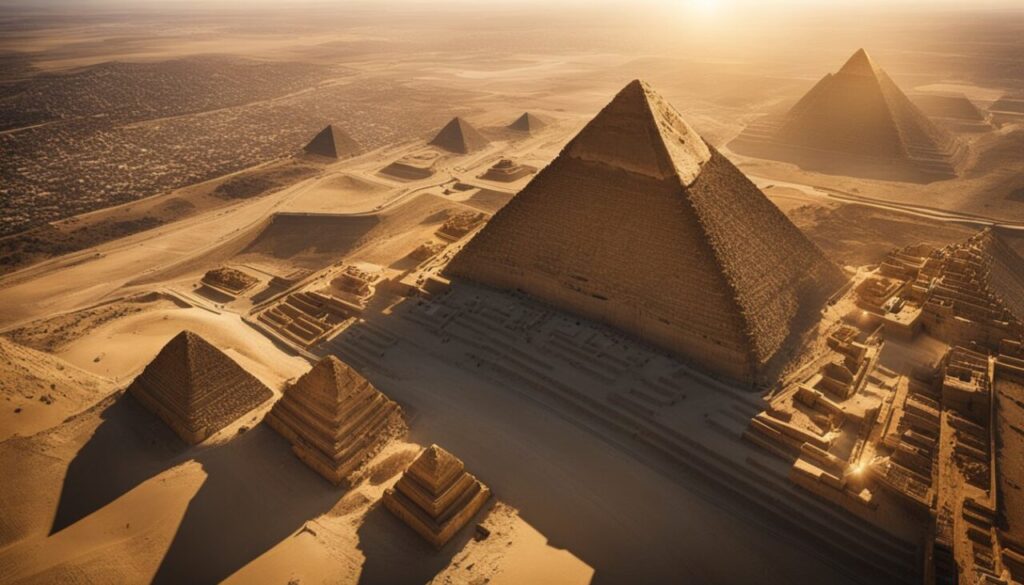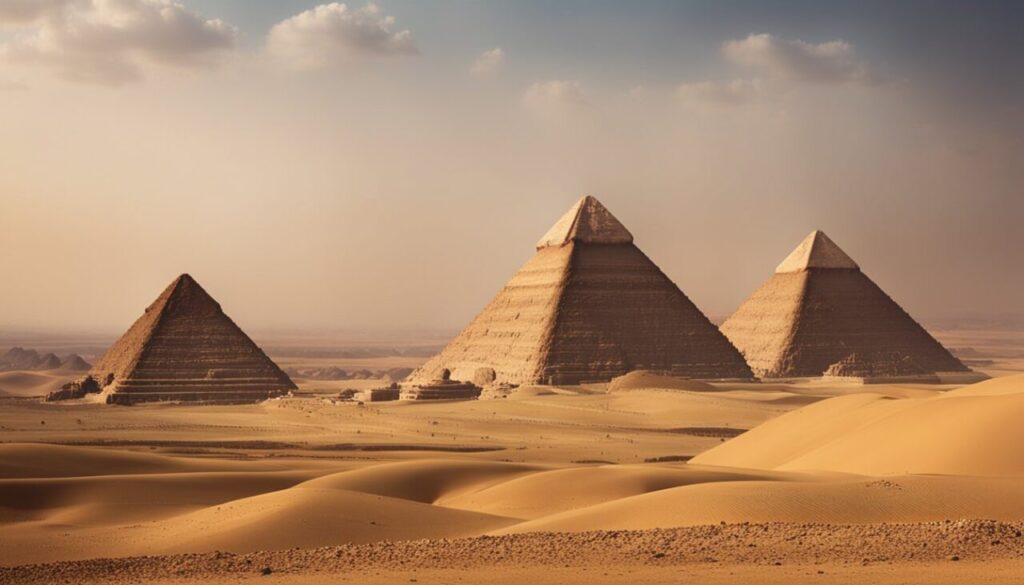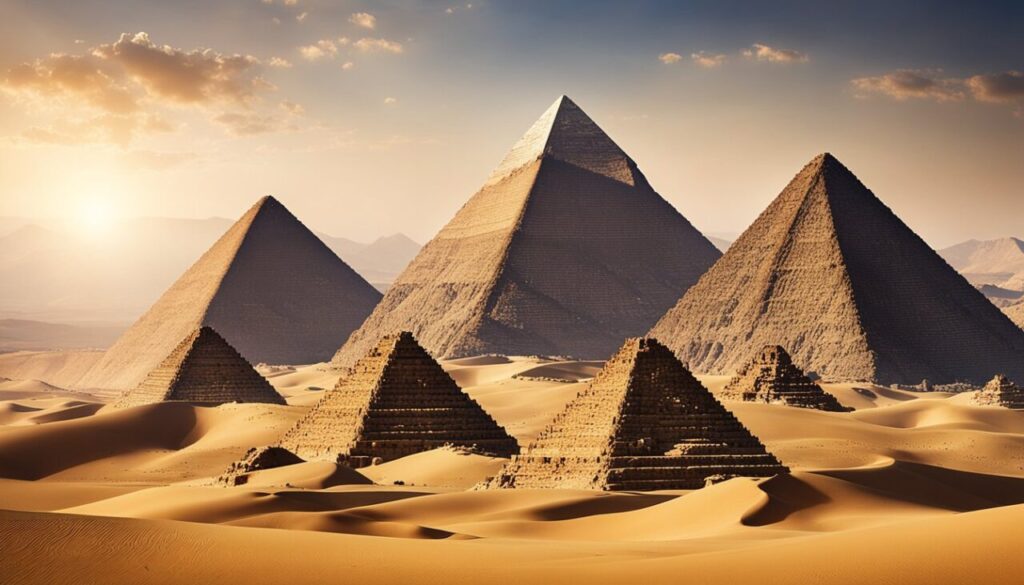
Egypt is home to some of the most iconic structures in the world, including the pyramids. Humans have been fascinated by these old buildings for hundreds of years, attracting travelers from all around the world.
However, many people may be very surprised to learn that there are not just one or two pyramids in Egypt, but rather a huge amount of them dispersed throughout the country.
The exact number of pyramids in Egypt is still a topic of dispute among experts.
While most people are familiar with the Great Pyramid of Giza, which is one of the Seven Wonders of the Ancient World, there are actually over 100 pyramids in Egypt.
These structures vary in size, location, and complexity, with some being well-preserved and others in a state of ruin.
And so, let’s dive deeper into this topic and find out the definite answer.
We’ll find out how many pyramids are there but we’ll also explain all details that are relevant to pyramid count.
Namely, not all pyramidologists agree on the final number of pyramids, as the structures could be defined in different ways.
So, let’s begin.
Interesting fact: Great Pyramid of Giza was originally covered in smooth, polished casing stones made of highly reflective Tura limestone, creating a shining exterior that would have been visible from great distances.
Overview of Egyptian Pyramids

Historical Significance
Historians believe that the construction of pyramids began in Egypt around 2630 BC. The first pyramid, the Step Pyramid of Djoser, was built during the Third Dynasty by the architect Imhotep.
The largest and most famous pyramids were built during the Fourth Dynasty, including the Great Pyramid of Giza, which was built for Pharaoh Khufu.
There are many varying beliefs on the real purpose of pyramids. Some say that they were built as tombs for pharaohs. However, many believe that pyramids served different purposes.
Today, the pyramids are a popular tourist attraction and a symbol of Egypt’s ancient civilization.
They have been featured in countless movies, books, and other forms of media, making them one of the most recognizable structures in the world.
Interesting fact: Some theorists speculate on potential connections between Nikola Tesla's fascination with the numbers 3, 6, and 9 and the mysterious design of the pyramids in Egypt.
Geographical Distribution

As mentioned pyramids are scattered throughout the country. Here are the major geographical locations where pyramids can be found:
Giza Pyramid Complex
The Giza Pyramid Complex, located on the outskirts of Cairo, is the most famous pyramid site in Egypt. It is home to the Great Pyramid of Giza, also known as the Pyramid of Khufu. The complex also includes the Pyramid of Khafre and the Pyramid of Menkaure, as well as numerous smaller pyramids and tombs.
Dahshur Necropolis
The Dahshur Necropolis, located about 40 kilometers south of Cairo, is home to several pyramids built during the Old Kingdom period. The most famous of these is the Bent Pyramid, which has a unique shape due to a change in the angle of its construction midway through its construction.
The Red Pyramid, also located in Dahshur, is the third-largest pyramid in Egypt.
Interesting fact: The Bent Pyramid is the only pyramid in Egypt with two entrances.
Saqqara Necropolis
The Saqqara Necropolis, located about 30 kilometers south of Cairo, is home to the Step Pyramid of Djoser, which is considered the oldest pyramid in Egypt.
The necropolis also includes several other pyramids, such as the Pyramid of Unas and the Pyramid of Teti, as well as numerous tombs and temples.
Other Locations
Pyramids can also be found in other locations throughout Egypt, such as Abu Rawash, which is home to the unfinished Pyramid of Djedefre, and Meidum, which is home to the collapsed Pyramid of Meidum.
There are also several smaller pyramid sites located throughout the country.
Interesting fact: The Pyramid of Meidum was originally built as a step pyramid before being converted into a true pyramid.
Pyramid Count and Classification

True Pyramids
True pyramids are those with smooth sides and a pointed top, and they were built during the Old Kingdom period. There are approximately 118 true pyramids in Egypt, with the majority located in the Memphis and Saqqara regions.
It is believed that these pyramids were built as tombs for pharaohs and their consorts to protect the pharaoh’s body and soul in the afterlife.
Step Pyramids
Step pyramids are another type of pyramid found in Egypt. These pyramids were built during the Third Dynasty and are characterized by a series of steps or tiers. The most famous step pyramid is the Pyramid of Djoser, located in Saqqara.
There are approximately 17-20 step pyramids in Egypt, with most of them located in the Saqqara region.
Number by Dynasty
Pyramids were built during different periods in Egyptian history, with each dynasty contributing to the construction of pyramids.
The majority of pyramids were built during the Old Kingdom period, with more than 90 pyramids built during this time.
The Middle Kingdom saw a decline in pyramid building, with only around 12 pyramids constructed during this period.
The New Kingdom saw a resurgence in pyramid building, with approximately 7 pyramids built during this time.
And so, with that do we have the final answer on the number of pyramids?
Let’s see.
How Many Ancient Egyptian Pyramids Are There?

Well, actually no one can agree on only one number. As explained in previous paragraphs, there are different kinds of pyramids and scholars cannot agree on the correct and final number.
Internet “says” that there are 118 pyramids overall, citing different sources like:
However, some other sources say that there are 138 pyramids overall if we also count so-called step pyramids.
Our research also takes us to that number.
So, in summary, we could say with 100% certainty that there are more than 100 pyramids in Egypt. Is this number 118 or 138, no one can currently agree.
Not even the most prominent scholars and historians.
And when you think about it a little more, it’s actually not that surprising. Scientists and experts still cannot agree on the best model to explain how the pyramids were built.
Not only that, experts cannot even agree on the date of construction of the most famous pyramids.
And considering that, probably no one knows the exact number of pyramids.
As we mentioned, the number itself depends on several factors.
And when we add the possibility that some pyramids have not yet been found or are buried, then we come to an extreme complexity that no one has yet solved.
Perhaps it is better to stay that way.



























